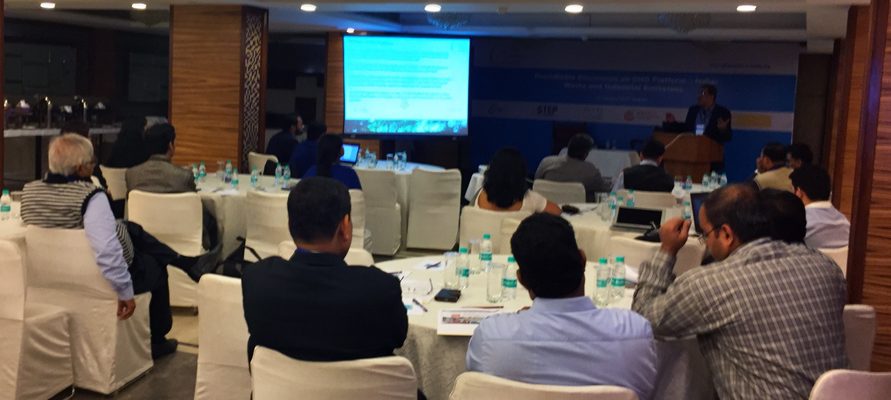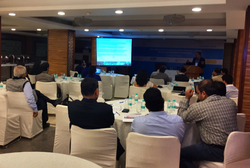Waste and industrial emissions: A Roundtable Discussion under GHG Platform – India

Experts from Waste and Industrial Sectors gathered together to discuss on the waste and industrial emission estimates, in a roundtable discussion held on February 3, 2017 for the next phase of GHG Platform India. Held in Kolkata, the event was attended by over 30 participants from government and non-government organisations, educational institutes, industrial associations, and private organisations such as Central Statistical Office of Ministry of Statistics and Programme Implementation (MoSPI), Legal initiative for Forest and Environment (LIFE), Jadavpur University and Indian Institute of Science Education and Research (IISER), Bengal National Chamber of Commerce and Industry (BNCCI), First Climate India and Ernst & Young LLP.
Mr. Emani Kumar from ICLEI – Local Governments of Sustainability South Asia (ICLEI South Asia) opened the workshop by welcoming the guests and appreciating Vasudha Foundation for initiating the idea and taking the lead for implementing the project. Mr. Srinivas Krishnaswamy from Vasudha Foundation initiated the discussions by explaining how the whole idea of “unpacking and repacking the National level GHG emission inventory” came up in a climate meeting in Peru while briefly explaining the project. Mr. Chirag Gajjar from World Resources Institute (WRI) later highlighted how the entire exercise of estimating emissions in a transparent manner could contribute to the global stocktake under the Paris Agreement till 2023.
Emission estimates from waste and industrial sector were the key agenda of the event. Ms. Soumya Chaturvedula from ICLEI South Asia presented on the GHG emissions estimations from the sector. She focussed on methodology adopted for the emission estimations, data sources and assumptions, and challenges faced in the sector. This was followed by detailed discussions on quantum of GHG emissions from solid waste disposal, inclusion of emissions from solid waste processing technologies, and consideration of emission reduction due to recycling. A similar presentation on GHG emissions from the industrial sector was delivered by Mr. Vaibhav Gupta and Mr. Tirtha Biswas from Council on Energy, Environment and Water (CEEW). Further discussions focussed on emission factors and datasets considered, consideration of emissions from deforestation due to increased mining inclusion of mining emissions disaggregated by location or mineral, and accounting of emissions from coal-based industries in the estimates.
For the GHG India platform as a whole, the participants also recommended going beyond the scope and approach for GHG inventorization at the global and national level and using the Platform to incorporate and collate other activity specific data – either by engaging citizens and companies to voluntarily report their consumption patterns on the platform or by linking with other processes such as the Environmental Impact Assessment (presently undergoing modification and expected to include GHG emissions). The participants also suggested that there was scope for better and clear indication of specific activities and emission sources included under the emission estimates for each sector on the platform.
In continuation to the discussions, Prof. Shadhan Ghosh from Jadavpur University shared his experience and learnings from a similar exercise conducted in a few cities in India and UK for industrial and waste sectors.
Mr. Krishnaswamy concluded the event by thanking all participants for the discussions and valuable inputs.
The insightful inputs and suggestions received from the experts will be considered for the current phase and the upcoming activities of the platform.



